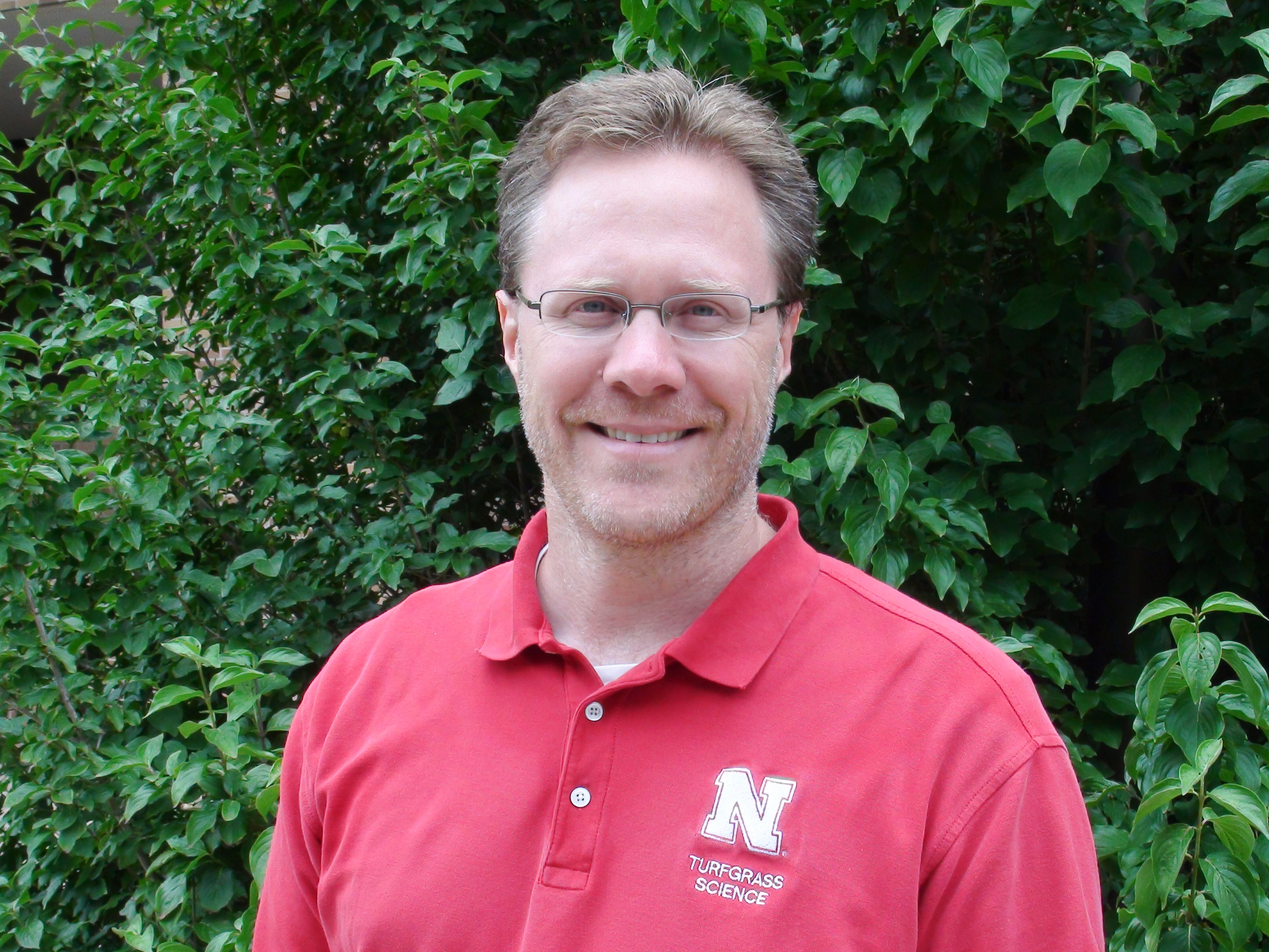
Wednesday, June 29, 2022
Author: Roch Gaussoin
Dr. Keenan Loder Amundsen is an important member of our turfgrass sciences team and is being promoted to full professor in August 2022. Keenan joined the University of Nebraska-Lincoln Turfgrass Sciences team as a Turfgrass Geneticist in 2011. Interviewing in January of that same year, the John Seaton Anderson Turfgrass Research Facility near Mead was under several inches of snow, and he couldn’t see the turfgrass germplasm that he’d soon be studying. Keenan and his family moved to Lincoln in May to start his career as an Assistant Professor of Turfgrass Genetics. As a new and enthusiastic professor, he grabbed his plot maps and headed straight to the farm. He jumped out of the truck forty-five minutes later, eager to line up the records with the plant material and watched as the Nebraska winds caught his maps and carried them 100 yards down wind. He still spent the day exploring the buffalograss germplasm, embarrassed by his error, but learned the importance of rubber bands and binder clips when working in the field.
He was promoted to Associate Professor in 2017 and is reaching the pinnacle of the academic career path later this year. He has published 46 research articles that have been cited more than 1,700 times, released two cultivars, given more than 80 presentations, and generated 1.9 million in grant expenditures supporting his research. He has taught seven separate classes, advised more than 25 undergraduate turfgrass management students, and trained 10 graduate students. Committed to student success he also serves as chair of the departmental graduate committee, continuing the tradition of successful UNL turfgrass scientists serving in administrative roles.
Keenan is a leading turfgrass industry computational biologist, where he uses high performance computers to analyze biological data. His favorite application is to use transcriptomics to study conditional responses in turfgrasses; he sequences the entire complement of genes (often more than 40,000) that are activated or repressed at a given point in time in response to a stress, such as drought, disease, or insect feeding, and identifies genes important for susceptibility or tolerance to the studied trait. He then develops genetic tools to advance resistance traits in his breeding material. Recently he is contributing his expertise in sequenced buffalograss, colonial bentgrass, and creeping bentgrass genomes. The sequenced genomes will provide a blueprint for more rapid integration of genetic tools in the development of new cultivars.
Neither the Nebraska winds nor Keenan’s enthusiasm for turfgrass breeding and genetics have slowed, and we are eager to see the continued impacts of his research and teaching. Please join us in congratulating Dr. Amundsen on this achievement.